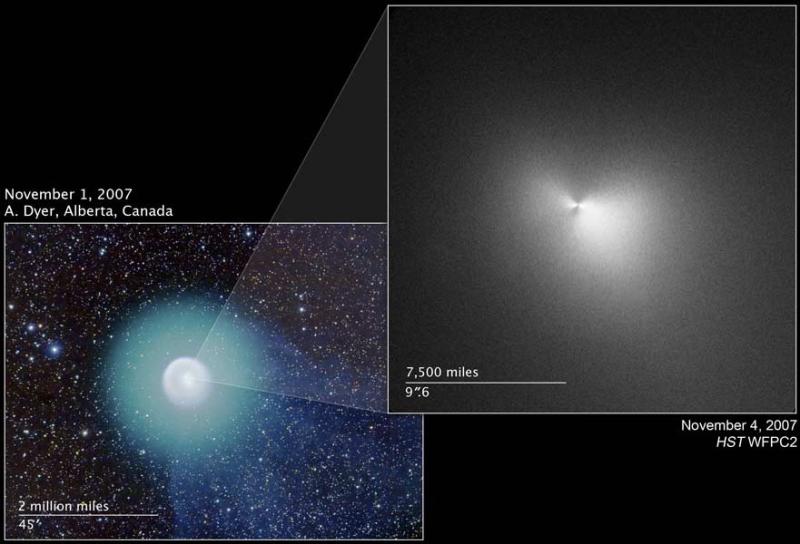Explanation: Why did Comet Holmes brighten? The unexpectedly bright Comet 17P/Holmes continues to grace northern skies as a naked-eye addition to the constellation Perseus. Any northern sky enthusiast with a dark sky, a bright curiosity, and a recent sky map should still be able to locate the comet in a few minutes. What is seen, however, is primarily the sun-light reflecting dust coma. It surrounds an iceberg nucleus too small and too faint to discern. Clues to the nearly million-fold brightness increase are therefore being sought in dramatic images of the enigmatic comet's central regions taken earlier this month by the Hubble Space Telescope. One such Hubble image, shown above, indicates a still unresolved dense central dust cloud near the nucleus, surrounded by a more complex, anisotropic coma. The Hubble images do not show any obvious fragmentation of the nucleus, however, as was seen last year in Comet Schwassman-Wachmann 3. Observers around and above the world will continue to study this unusual addition to the night sky.
1999 2000 2001 2002 2003 2004 2005 2006 2007 2008 2009 2010 2011 2012 2013 2014 2015 2016 2017 2018 2019 2020 2021 2022 2023 2024 2025 |
Yanvar' Fevral' Mart Aprel' Mai Iyun' Iyul' Avgust Sentyabr' Oktyabr' Noyabr' Dekabr' |
NASA Web Site Statements, Warnings, and Disclaimers
NASA Official: Jay Norris. Specific rights apply.
A service of: LHEA at NASA / GSFC
& Michigan Tech. U.
|
Publikacii s klyuchevymi slovami:
comet Holmes - komety - yadro komety
Publikacii so slovami: comet Holmes - komety - yadro komety | |
Sm. takzhe:
Vse publikacii na tu zhe temu >> | |
